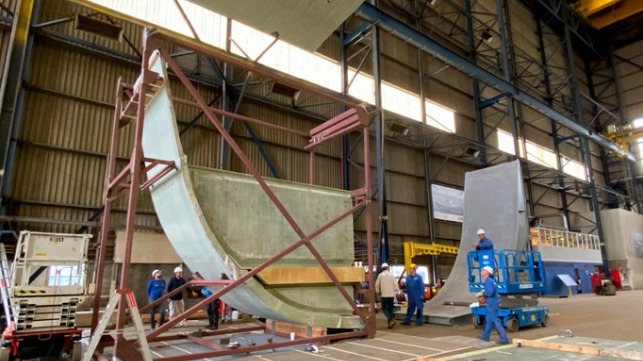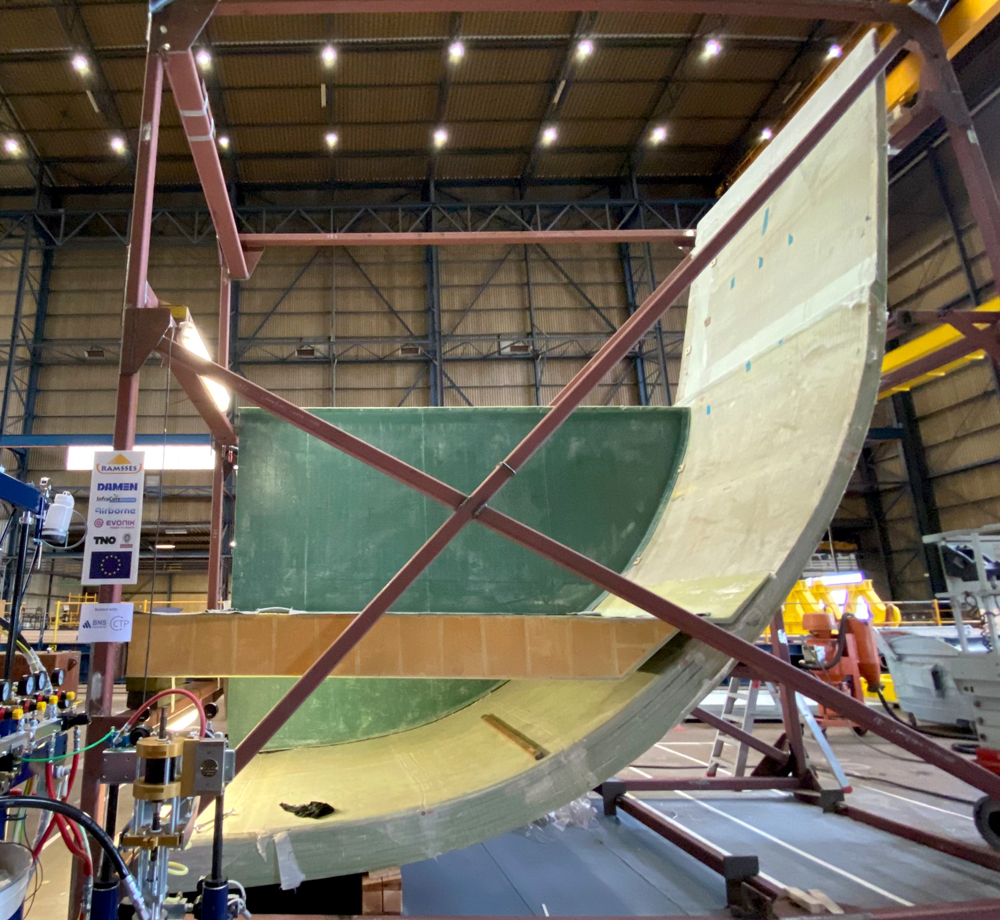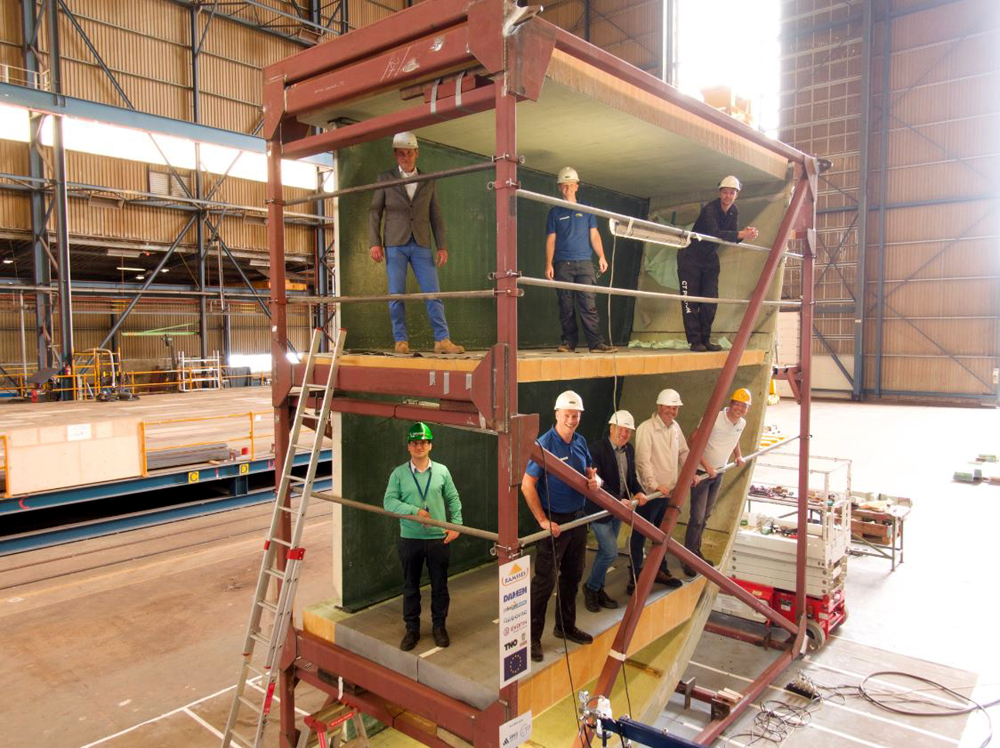Project Demonstrates First Sustainable Composite Ship Hull Assembly

The future of shipbuilding took a step forward with the unveiling of an assembled full-scale section of a ship’s hull made of sustainable composite materials. The project will now proceed with a series of tests designed to demonstrate the viability of large composite ships as a sustainable shipping solution.
Called the Custom Made Hull for Offshore Vessel, it was under development for the past three years at Damen Schelde Naval Shipbuilding’s (DSNS) location in Vlissingen-East, the Netherlands. The effort is one of thirteen demonstration projects underway as part of the Realisation and Demonstration of Advanced Material Solutions for Sustainable and Efficient Ships (RAMSSES) project. The European Union’s Horizon 2020 research and innovation program provided a grant to the RAMSSES project.
The partners noted in reaching the milestone that the project has pioneered in key areas including the capability to infuse thick laminates up to six meters in height. In addition, performing the assembly at DSNS’ location demonstrated the possibility to undertake composite construction at a steel yard.

There are numerous benefits to composite shipbuilding and its contributions towards greater maritime efficiency and sustainability according to the project partners. A composite vessel like the one the RAMSSES partners are working towards would weigh up to 40 percent less than a steel equivalent which would contribute to a considerable reduction in both fuel consumption of up to 25 percent as well as reductions of harmful emissions ranging from GHG, aerosol formation, eutrophication, and acidification.
“The use of composites for larger ships has significant consequences for the entire design of the ship,” says Marcel Elenbaas, senior engineer at Research & Technology Support DSNS. “If it is lighter, a vessel uses less fuel and produces lower emissions. The vessel also requires smaller engines, which means more space for additional systems, making for a more versatile platform, and of course, composites require considerably less maintenance than a steel vessel. With RAMSSES we have the opportunity to demonstrate the effectiveness and viability of large-scale composite shipbuilding.”
One of the goals of the RAMSSES project is to address the scaling up of composite technology by validating the production process of large composite structures. Currently, the partners highlight that in the absence of approved guidelines, regulations only address composite shipbuilding for vessels up to 500 tons and approximately 25 meters in length. Their goal is to develop a design for composite vessels up to 85 meters in length that will be in full compliance with Safety of Life at Sea (SOLAS) and class regulations including fire-resistance, impact resistance, and structural robustness.
The baseline designs for the project is being led by led by DSNS and Damen Shipyards Gorinchem (DSGo). Airborne UK and InfraCore Company brought their expertise in composites to the project, and are responsible for the engineering development, while Evonik developed the resin to infuse the composites. Following assembly, TNO will now perform full-scale tests for validation of design, quality management, and structural performance.
The approval process for the composite technology is being developed in close cooperation between the Research Institutes of Sweden (RISE), Netherlands Maritime Technology Foundation, and Bureau Veritas. RISE and Bureau Veritas have already been performed a Hazld (hazard identification) test to address all fire risks and additional fire performance criteria defined will be tested and validated at the facilities of RISE.

